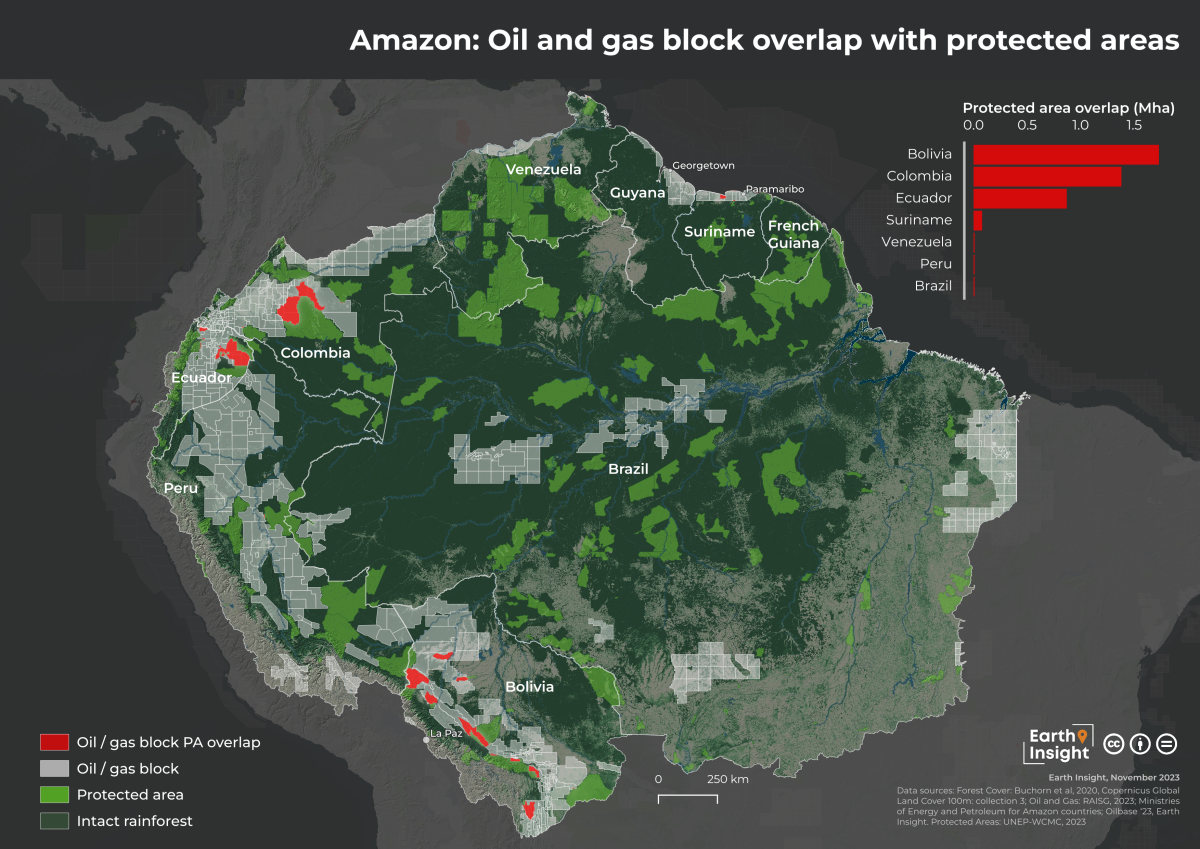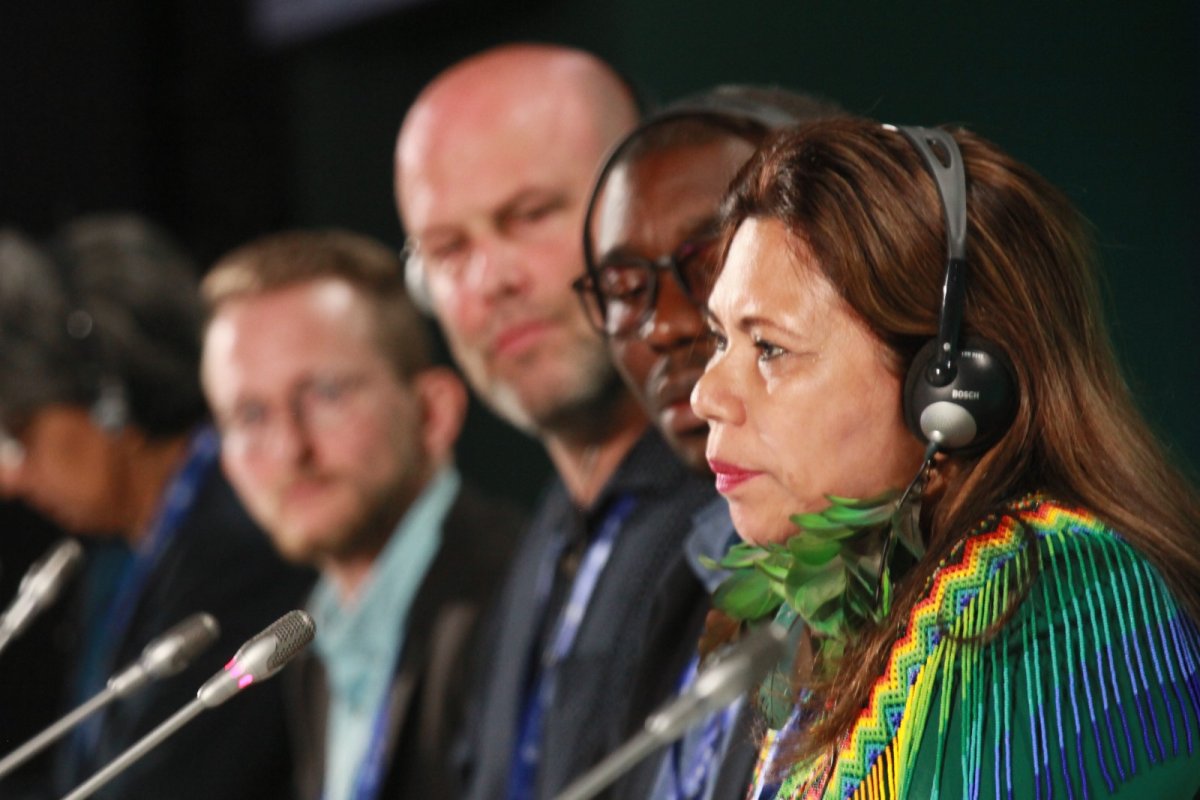For all the focus on technology to combat climate change, we have no greater ally than Mother Nature. In the closing days of the United Nations COP28 climate talks, conservation scientists stressed the importance of forests, grasslands, oceans and other ecosystems to absorb enormous amounts of carbon dioxide from the atmosphere.
“The science is clear. Conserving nature is absolutely essential if we are to reach global climate goals,” Campaign for Nature Director Brian O’Donnell said in a press briefing, adding that the Paris Agreement’s goal of limiting warming to 1.5 degrees Celsius (2.7 degrees Fahrenheit) rests in large part on natural systems. “There is no pathway to 1.5 degrees without a major effort to conserve and restore nature.”
While the science may be clear, the sources of funding to protect nature have been murky. According to COP28 officials, the nearly two weeks of climate talks in Dubai brought progress on funding nature-based climate solutions. More than $2.5 billion in financing to protect and restore natural systems was mobilized, and officials strengthened an international agreement to protect biodiversity.
However, a pair of reports released during the conference pointed out the wide disparities between the current efforts to protect natural systems and the economic pressures that destroy and degrade them.
Carl de Souza/AFP via Getty Images
One report showed that money flowing into global economic activity that harms nature is more than 30 times greater than the funding to protect nature. Another found that even within nominally protected areas, the pressure to extract fossil fuels still threatens tropical forests around the world.
And throughout the climate talks, representatives of the people who live in the world’s tropical forests offered reminders that there is much more to a forest than the carbon-absorbing ability of its trees.
“The Amazon also needs to take care of its people,” Helder Barbalho, governor of the Brazilian state of Pará, said at a COP28 event for state leaders. “The world must also be concerned with the people living in the Amazon region.”
Funding Natural Solutions
The U.N. Environment Programme’s “State of Finance for Nature” report released Saturday at COP28 identified approximately $200 billion in total investments in nature-based solutions in 2022. However, the UNEP report also found that total global financing for “activities directly harming nature” last year was close to $7 trillion.
“COP28 must be the turnaround where countries not only agree on the what but also on the how,” Mirey Atallah, the head of the UNEP Nature for Climate branch, said at a press conference in Dubai. “And nature-based solutions are part of the how.”
To meet the commitments for natural protection that nations made at previous U.N. gatherings, the UNEP report found, financing must nearly triple from current annual levels by 2030.
Work by the research organization Earth Insight shows that even protected forests are not always free from the threats from resource extraction.

Courtesy of Earth Insight
“Our findings show that there are nearly 1,000 protected areas that have ongoing or planned fossil fuel extraction projects within their boundaries,” Earth Insight Executive Director Tyson Miller told Newsweek.
Earth Insight mapped protected areas and oil and gas plots and coal reserves in the world’s three major tropical forest basins: the Amazon in South America, the Congo in Central Africa and the Borneo-Mekong in Southeast Asia. Their results showed about 14 percent of the land in protected areas overlap with the fossil fuel blocks.
If those oil, gas and coal sites are fully exploited, Miller said, the group calculated the potential greenhouse gas emissions could reach 50 billion tons over the lifetime of the projects.
“It’s a huge climate issue,” Miller said. “It’s not compatible with the principles of nature-based solutions.”
Forests for People
Despite those challenges, Miller said he also sees more countries improving forest protections and, in some cases, embracing the transition to cleaner energy.
Colombia, for example, announced at COP28 that it will join an effort to phase out the use of fossil fuels, and the Colombian government said it has reduced deforestation to its lowest rate in ten years.
In neighboring Brazil, Pará Governor Barbalho said he is trying to reduce the deforestation pressure from agriculture. He announced at COP28 a program to use electronic tags to track and monitor cattle, allowing officials to monitor environmental conditions where the cattle are grazed. The Nature Conservancy estimates that cattle ranching is responsible for about a quarter of Brazil’s annual tropical deforestation.
“Our greatest challenge is to make sure that a live forest is worth more than a dead forest in people’s minds,” Barbalho said.
Representatives for Indigenous people from the Amazon visited COP28 to make sure that the people who live most closely with tropical forests are part of the discussions.
“It’s important to be here to raise our voices,” Fany Kuiru Castro told Newsweek through a translator. Kuiru is a lawyer and leader of the Uitoto people of the Colombian Amazon. Earlier this year, she became the first woman to lead the Coordinating Body of Indigenous Organizations of the Amazon Basin, a group that represents more than 500 groups across the nine Amazonian countries.

Courtesy of Earth Insight
Kuiru said the prolonged and intense drought that has gripped much of the Amazon this year has had profound effects on the people who depend on the forests.
“We are having problems with food because the agricultural calendar is changing,” she said. “Second, the rivers are drying, so we have to walk a lot of miles to have water.”
Kuiru said she worries that the combination of deforestation, fires and drought could push the Amazon ecosystem past tipping points beyond which it cannot recover. She urged the world leaders gathered in Dubai to work with Indigenous groups on solutions.
“The Indigenous peoples are already doing the conservation, all the best practices to not murder the Mother Earth,” she said, “but live in the way that conserves the natural spaces.”


